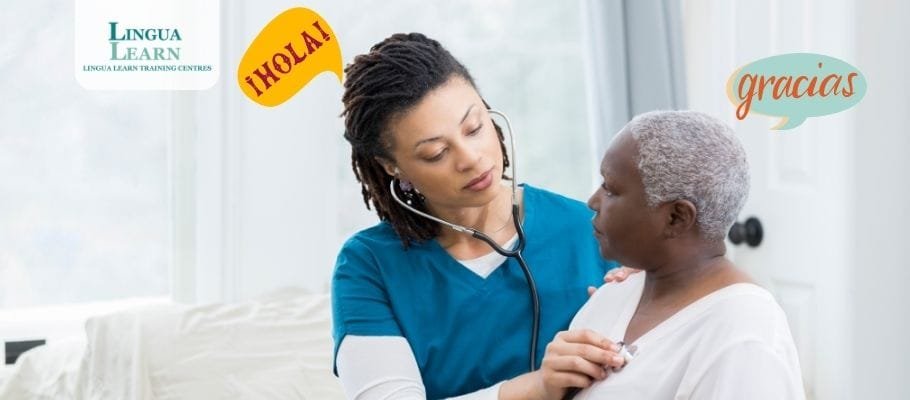
In today’s diverse world, effective communication in healthcare is more important than ever. Medical professionals often encounter patients whose primary language is Spanish, and even a basic understanding of Spanish for healthcare can significantly improve patient outcomes, trust, and overall care. This guide introduces essential vocabulary and phrases every healthcare worker should know.
Spanish is the second most spoken language in the United States, with more than 40 million native speakers. In medical settings, language barriers can lead to misdiagnoses, treatment delays, or misunderstandings. According to ProPublica, language gaps in healthcare remain a major challenge, putting vulnerable populations at risk. By learning Spanish for healthcare, professionals can bridge this gap and provide safer, more compassionate care.
The first interaction with a patient sets the tone for trust and comfort. Here are some essential phrases for patient intake:
Mastering intake vocabulary helps streamline patient registration and ensures that critical information is collected accurately.
Understanding symptoms is crucial for diagnosis. Key vocabulary includes:
Sample phrase: ¿Dónde siente dolor? – Where do you feel pain?
These simple but powerful terms allow healthcare professionals to assess patients quickly and effectively.
Clear instructions are vital during examinations or treatments. Some useful commands include:
These phrases make patients feel more at ease while ensuring medical procedures go smoothly.
Emergencies require fast, precise communication. Here are some essential words:
Sample phrase: ¿Tiene alguna condición médica? – Do you have any medical condition?
Being prepared with urgent care vocabulary can literally save lives.
Healthcare is not just about vocabulary—it’s also about cultural sensitivity. Respect for family involvement, traditions, and beliefs plays a major role in treatment acceptance. Resources like the CDC’s Spanish resources can provide additional cultural and medical guidance.

tips
Learning a new language while working full-time can feel overwhelming. Here are some tips:
For healthcare workers seeking structured training, Lingua Learn’s Spanish courses for adults are tailored to professionals. Clinics and hospitals can also explore language training programs to upskill their staff.
التحدث Spanish for healthcare not only benefits patients but also enhances your professional growth and workplace reputation.
Mastering essential Spanish for healthcare vocabulary empowers medical professionals to provide better care, save time, and build stronger patient relationships. From intake to emergencies, even small efforts in learning Spanish can have life-changing effects.
If you’re ready to improve communication and patient care, start your journey today. Explore Lingua Learn’s Spanish courses or discover language training for medical staff to take your skills to the next level.

1. Why is Spanish important for healthcare professionals?
Spanish is the second most spoken language in the U.S. Many patients feel safer and more comfortable when they can communicate in their native language, leading to better healthcare outcomes.
2. How much Spanish do I need to know to help patients?
Even basic vocabulary and simple commands can make a huge difference. Fluency is helpful, but learning key medical phrases is often enough to improve communication.
3. Can learning Spanish improve my career opportunities?
Yes. Bilingual healthcare professionals are in high demand and often enjoy better job prospects, salary benefits, and leadership opportunities.
4. Are there resources for learning medical Spanish?
Absolutely. You can use apps, online courses, flashcards, or join specialized programs like Lingua Learn’s Spanish courses.
5. How can hospitals train their staff in Spanish?
Hospitals and clinics can partner with providers offering group language training programs tailored to healthcare professionals.